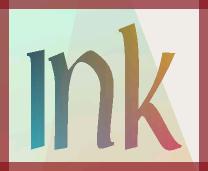|
September 2003
Seems that I missed last months column -- sorry, but I was busy getting married and it seemed like a more important choice than an INK column. So back to the frey -- Last time we left off part way through looking at Peter Nielson's new PMView program for both OS/2 and Windows. As it turns out, my wedding (and the pictures from it) provided an opportunity to really give the program a workout! When I got our wedding pictures back, they included all of the images on a CD, and a number of the black and white rolls were upside down. No problem with PMView. You simply go to the file - open view (Ctrl-O), select all of the images by placing your cursor in a blank space and right clicking to bring up the choices, place the cursor over one of the images, and right click again. Up pops a dialog box that includes Convert as a choice. From the Convert choice, I simply selected a New Script option, and then by adding features to the script from a drop down list, directed the script to take each image, first rotate it 180 degrees to flip it right side up, then convert the image to greyscale for better black and white printing, resample the pixels in the process, and put the resulting image in a specified subdirectory as a jpg file. Then I simply saved the script and pressed Convert. Zoom -- off in the background the script converts each image and dumps the result into your specified directory. Since the magic all happens in the background, you can keep on working on your computer while the conversions take place. In my case this allowed me to write this article while the script ran. Ah, multithreading and multitasking for real! How sweet it is. Since I had to change a total of some 100 plus images, as you can imagine I like the QuickScript feature of PMView a lot. Well done, Peter! Speaking of printing (I was speaking of printing, wasn't I?), I have always loved the print controls/options in PMView, and the new version is even smoother and quicker than in the past. Ctrl-P pops up the print dialog box, and from there you have a seriously wide choice of options for your printed image. From the print dialog box, the most important controls are the image sizing one at the top, and the printer setup one at the bottom. From the printer setup box, on my Epson C80 I can select Mode (advanced photo, photo, text/graph, and economy), color or black printing, Media Type (plain paper, bright white, photo inkjet, heavyweight matte or 2 sided, archival matte, premium semigloss, or premium glossy, transparencies). Note that depending on what mode you select, the paper choices will automatically change in the popup box. Now the way to find out which combination of choices will produce the best output for you and your printer is to experiment! In my case and for these black and white images, it turned out that greyscale, advanced photo, color printing, heavyweight matte paper gave the most pleasing results. I cannot emphasize too much that there is no 'pure' print - there's just the best combination of choices for you and your image, and you will never find out what that is until you push the program and try all of the choices. With the C80 and how the black ink is different from the color inks, you can get a very different look by choosing the Color vs Black setting, for example. Remember, there are a whole bunch of further controls within PMView's Main Menu that give you a lot more control over the image itself: Image Size, Filters ( to blur, soften or sharpen the image), Edge filters, Special and User defined filters, plus a lot of color controls (brightness/contrast, RGB balance, Gamma correction etc.). Play with this program, it's easy to do and that's its joy and you will be amazed at what you can print out from our trusty old operating system! A final note is the exemplary ability of this program to handle virtually any image file format that there is out there and convert it. The program has saved my bacon in the past by being able to handle big tif files from a Mac Photoshop or Quark program that simply wouldn't open in the Windows version of Adobe Photoshop - no matter what Adobe may say, their various programs and versions on different os's do have real file incompatibilities. The simple solution was to load PMView and convert to a standard tif format and the day is saved. OK, enough. I simply recommend that you buy the program. PMView 3 is available from BMT software for $39.95. Next month, let's look at different PCL drivers and various laser printers that don't come with native OS/2 driver support. Feel free to contact me at Tony@scoug.com.
By day, Tony Butka is a bureaucrat for Los Angeles County. In his other life he lives in a loft surrounded by computers, printers, and a host of vinyl records.
P.O. Box 26904 Santa Ana, CA 92799-6904, USA Copyright 2003 the Southern California OS/2 User Group. ALL RIGHTS RESERVED. SCOUG, Warp Expo West, and Warpfest are trademarks of the Southern California OS/2 User Group. OS/2, Workplace Shell, and IBM are registered trademarks of International Business Machines Corporation. All other trademarks remain the property of their respective owners. |









